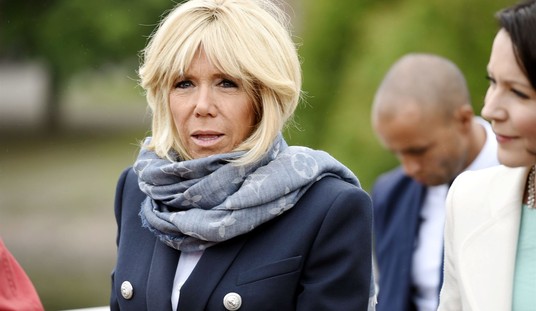If I had a nickel for every time I heard the words “misinformation” and “disinformation,” I could buy X from Elon Musk several times over.
Okay, that might be a bit of an exaggeration, but it is true that these terms have gained a considerable level of traction over recent years.
Back in 2016, the left’s favorite label for opinions or facts they did not like was “fake news.” This didn’t work out quite so well when former President Donald Trump snatched the term from the left and began rightly applying it to establishment media.
Now, leftists seeking to use government and other means to curtail speech have switched up the game, referring to anything that contradicts their ideas or arguments as “misinformation” or “disinformation.” Their beloved fact-checkers have been deployed to correct inaccurate statements in a supposed effort to ensure that consumers of information are not being misinformed.
In reality, the ultimate purpose of these labels has nothing to do with accurate information. Rather, it is about creating an excuse for using the state or other means to stifle dissenting opinions. However, it is worth noting that false information on digital platforms is a problem – especially in an age when it is easier to get people to believe hoaxes and false narratives. Unfortunately, those of the leftist persuasion promote solutions that would only make the situation worse.
Author Sander van der Linden, in a report for The London School of Economics and Political Science, highlighted the issue. He notes that misinformation and disinformation pose real, measurable dangers to Western society, impacting public trust, fueling violence, and distorting public perception.
The author gives a few examples of the harmful effects of misinformation. He cites the recent riots in the United Kingdom, “which were initiated directly by a false story on social media.”
The violence began after a 17-year-old stabbed three young girls to death at a dance event. Some folks on social media claimed the suspect was an asylum seeker. However, he was actually born in Wales. The story ignited violence by playing on valid frustrations with the UK’s immigration system.
The author brings up the genocide in Rwanda and the role propaganda played in inciting violence against the Tutsis. “Evidence from the Rwanda genocide highlights that 10% of the overall violence against the Tutsis can be directly attributed to areas that received propaganda radio,” he writes.
These are just a few instances in which misinformation has shaped public opinion. We can also look at the constant barrage of invectives hurled at former President Donald Trump and his supporters and how it created an environment in which two individuals tried to assassinate the former president.
False narratives can easily have dangerous outcomes – even if they do not always result in violence. They can influence people’s personal, professional, and political decisions.
Unfortunately, those crying the loudest about misinformation and disinformation only view government action as the answer. The Brookings Institute published a piece in 2017 suggesting, “Governments should promote news literacy and strong professional journalism in their societies.”
NGOs have also gotten in on the act, launching media literacy campaigns aimed at teaching people how to spot fake news. The efforts supposedly emphasize critical thinking and awareness.
Others on the left have pushed for stricter government regulations related to content shared on digital platforms. They rightly point out that social media companies like Facebook, X, and YouTube prioritize content that generates engagement rather than boosting content that provides accurate and valuable information.
In an age in which outrage porn and sensational content garner the highest number of clicks, digital platforms are incentivized to configure their algorithms in a way that puts this material in people’s feeds. The World Economic Forum touted the European Union’s Digital Services Act, which mandates AI regulations and transparency. Even now, several high-profile Democrats have called for more government control over online speech — First Amendment be damned.
Leftists have also suggested fact-checking initiatives. Independent organizations and media outlets are tasked with verifying claims made in news stories, political statements, and viral social media posts. The thought is that by flagging and debunking false information in real time, fact-checkers can prevent the further spread of fake news.
Yet, even this solution is problematic because fact-checkers carry an evident bias in how they correct inaccurate information. They typically focus primarily on perspectives coming from the right, while ignoring blatant misinformation coming from left-wing sources. Most fact-checkers define misinformation as anything that goes against leftist narratives or arguments. One only needs to check out the debate between Trump and Vice President Kamala Harris to see how supposedly objective moderators exhibited this bias.
The actual solutions for mitigating the impact of misinformation and disinformation do not involve government regulation. Instead, it is up to consumers of information to ensure they are properly informed – which is a scarier thought considering that many, if not most, people dwell in echo chambers.
Still, X provides a blueprint for checking the truthfulness of the information we see online. The company’s Community Notes feature allows users to check claims made on the platform, providing more context while debunking outright lies. In so doing, X has democratized fact-checking.
Instead of relying on activists disguised as journalists, people can correct inaccuracies and give people a fuller picture of the news stories of the day. It is essentially a way for people to help each other become more media literate. It certainly is not a perfect solution, but it is far better than giving the state more power over speech.
Another remedy would be to support actual independent and ethical journalism. With the advent of digital media, there are tons more voices out in the public sphere. The establishment media’s stranglehold on information has been shattered into little itty-bitty pieces. This means that consumers of information can seek out journalists and commentators that they trust instead of relying on cable news or newspapers.
Of course, this isn’t easy. Social media often rewards influencers and content creators who are only out for clout, clicks, and cash and are willing to say whatever they must to obtain these three things.
Nevertheless, there are still plenty of individuals out there who are obsessed with the truth, taking a more nuanced and less partisan view of the situation.
The bottom line is that it is up to us to ensure we are not taken in by misinformation, not the state. The question is: Are we up to the task?













